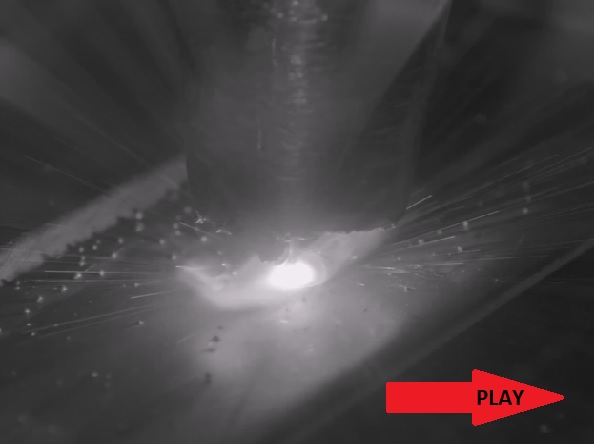Gas Metal Arc Welding (GMAW) is characterized by the creation of sparks and spatter ejecting from the workpiece as the weld wire/filament shorts and melts over 100 times per second. The creation of spatter is an inevitable part of the GMAW process but it presents a number of issues for the production process, including damaging functional surfaces, increased consumables, and poor finish aesthetics. It may not be possible to eliminate spatter altogether, but it can be greatly reduced with a better understanding of why spatter is created and how to tune your process parameters to control it.
Spatter is the discharge of high temperature material as a result of melt pool surface tension and the conversion of thermal energy to kinetic energy. This sprays small droplets of molten metal onto the surrounding area where they cool and solidify creating a non-uniform surface finish. It is well known that different GMAW processes produce varying levels of spatter but even spray GMAW, which is known for spatter control, can greatly benefit from spatter reduction.
See the full video: Spatter Ejected from GMAW Short Circuit Process on Stainless Steel
As well as being a nuisance to clean, spatter can be a costly problem for GMAW welding. A case study performed by Welding Answers [1] looked at the benefits of parameter tuning and found that spatter reduction by as much as 85% was possible through better parameter settings, leading to operating cost reductions of 21%. This was achieved through reduced labour costs, less lost filler material and fewer consumables required to post-process the weld.
In order to reduce the total spatter, a strong understanding of welding parameters and their effect on the weld pool is required. According to the ASME, 77% of welding defects including high spatter content are caused by improper processing conditions or operator error [2]. Most commonly, adjusting the amperage, voltage, and distance of electrode to workpiece are the significant factors influencing spatter production. Other factors that influence spatter include wire-feed speed, electrode thickness, and surface contamination.
With the use of a Xiris High Dynamic Range welding camera, the weld arc, spatter ejection, and surrounding material can all be clearly observed and the amount of spatter created during the welding process can be monitored and evaluated. This allows better understanding of the effects of varying the welding parameters and their influence on spatter formation. With a clear view of the operating field, welding parameters for every material and thickness can be adjusted to reduce spatter content and inefficiencies as a result of spatter production and cleaning can be greatly reduced.
For more information on how Xiris Weld Cameras can reduce splatter and enhance your GMAW welding processes visit Xiris.com
You can visit our
for dozens of examples of the camera in action.
Don't miss any of our amazing videos! Sign up to receive the Weld Video of the Month
References:
[1] http://weldinganswers.com/the-real-cost-of-welding-spatter/
[2] C. Matthews, ‘ASME Engineer’s Data Book’, ASME Press, January 2001




.png)


